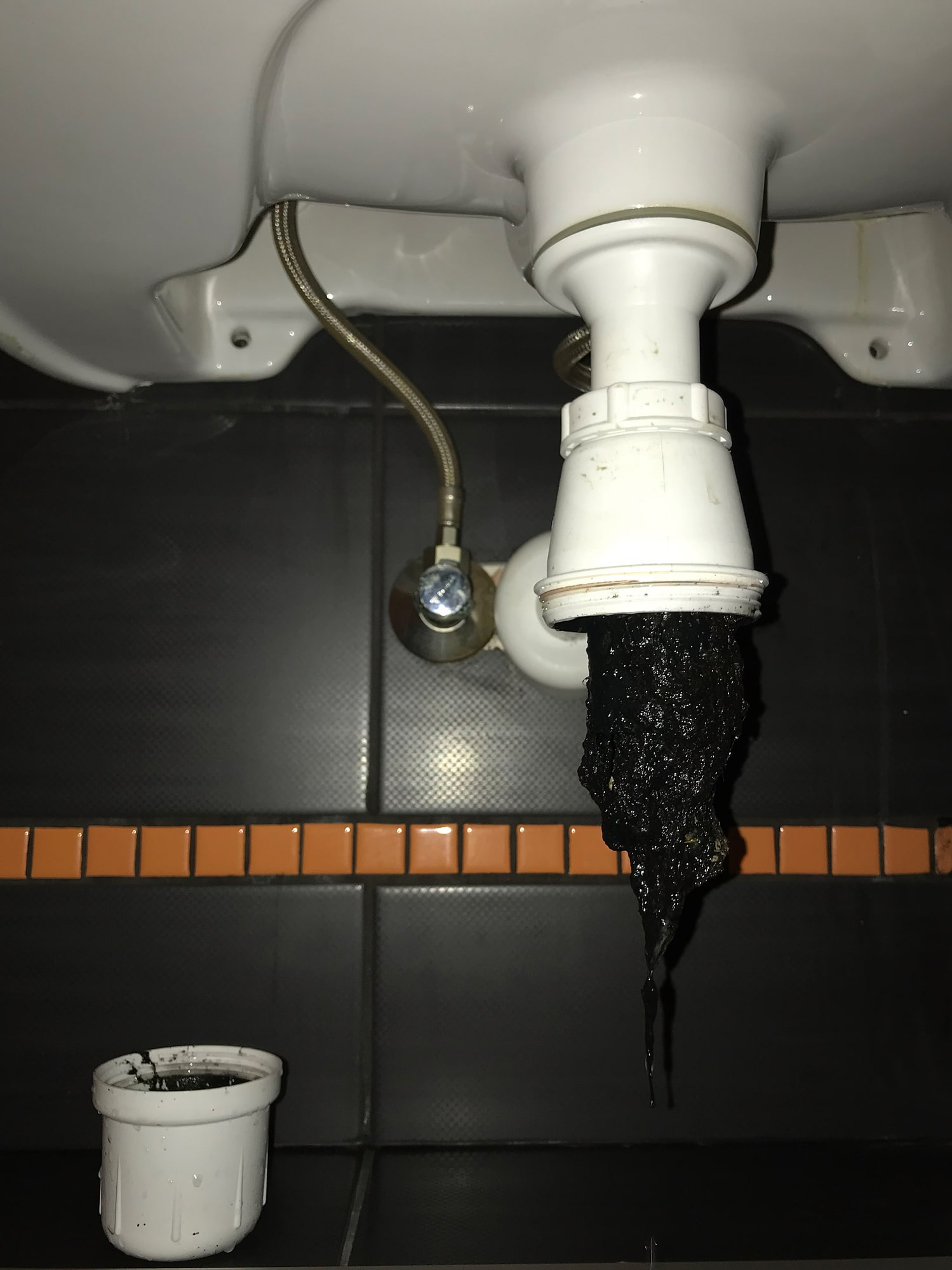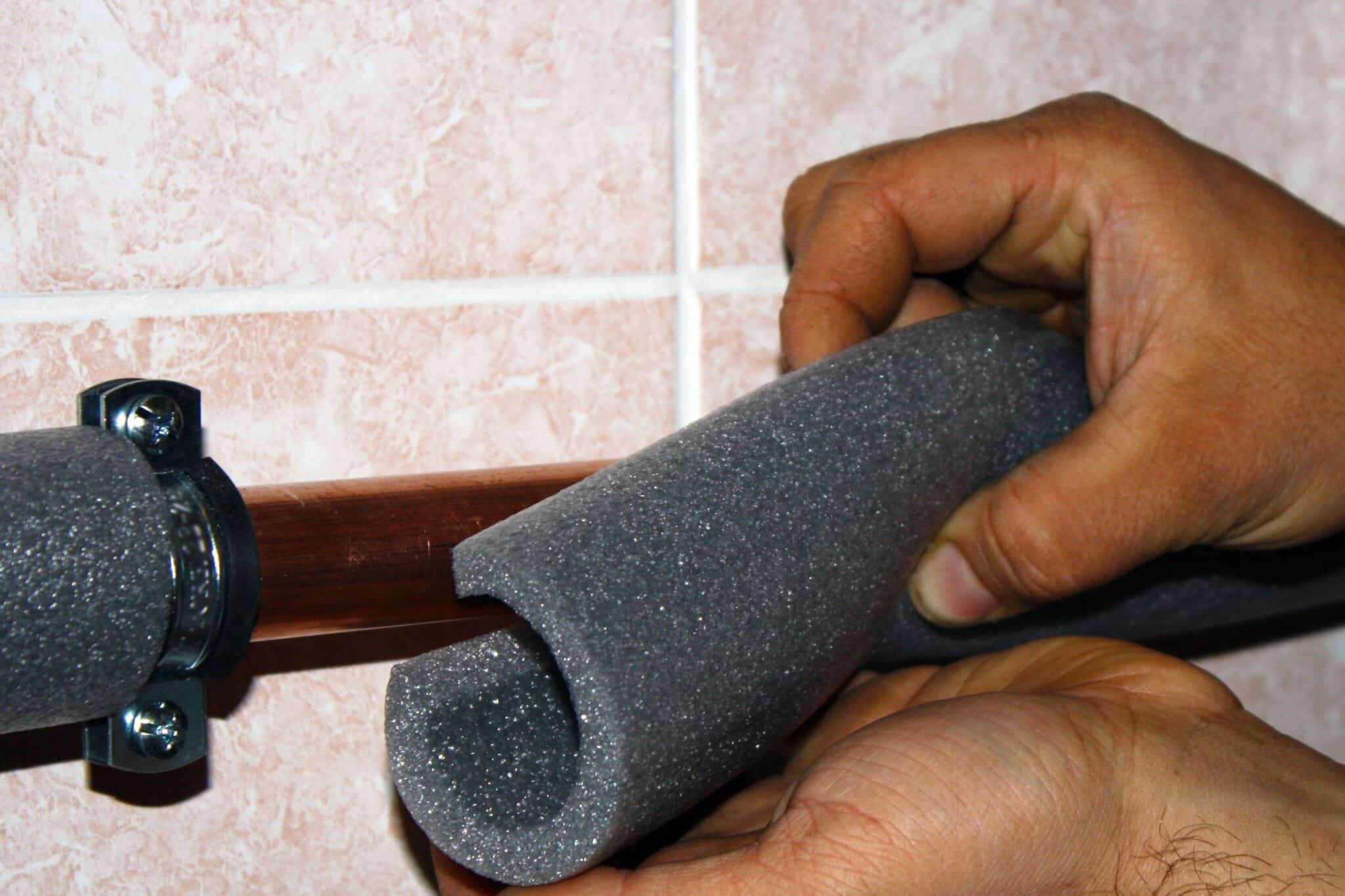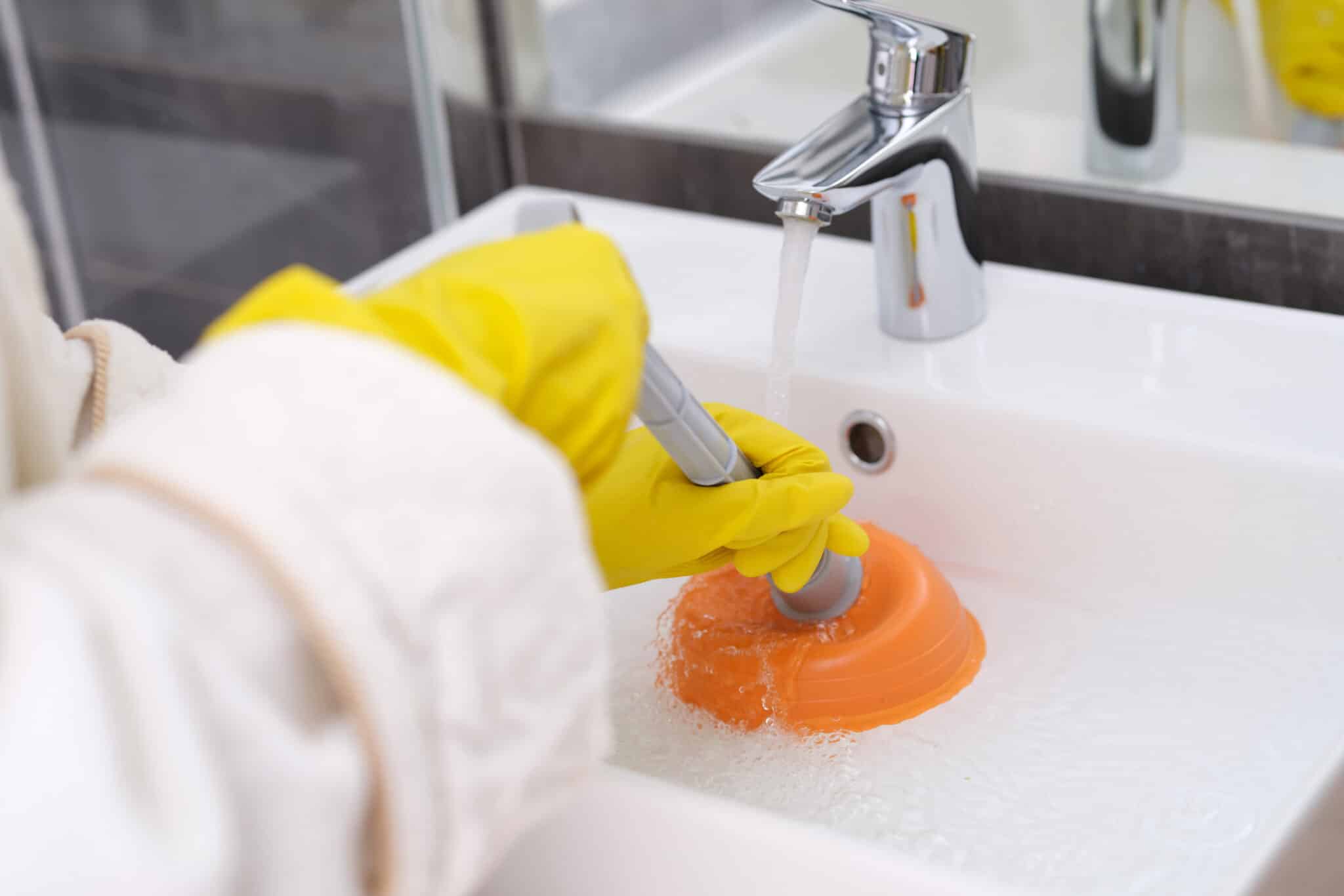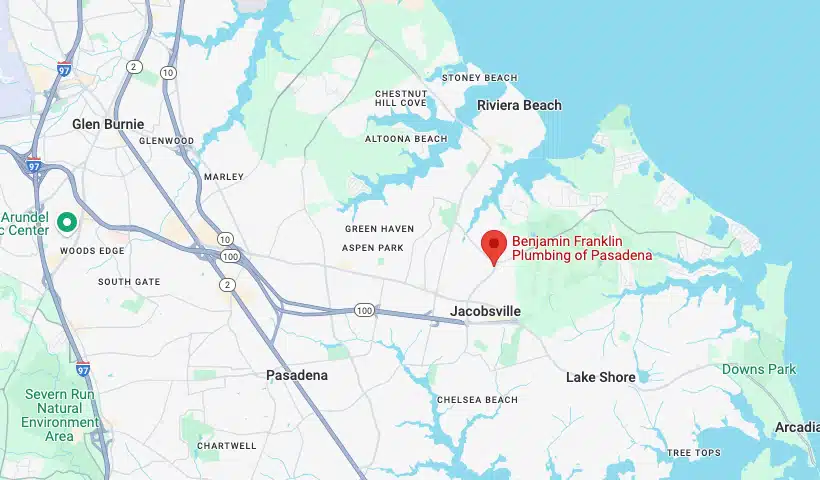Avoid Halloween Plumbing Nightmares in Pasadena, MD

Is your home ready to face Halloween’s spooky plumbing surprises? October’s chilly weather, falling leaves, and seasonal rainfall can create the perfect storm for clogged drains, leaks, and burst pipes. Imagine dealing with an unexpected plumbing nightmare just as guests arrive! By preparing your plumbing now, you can protect your home from costly, disruptive repairs and enjoy a worry-free holiday season.

Keep Outdoor Pipes Safe from Freezing
As October nights get colder, safeguarding your outdoor plumbing isn’t just a good idea—it’s essential to avoid costly water damage and repair headaches. When temperatures drop, any water left in pipes or hoses can freeze, expand, and create severe issues like pipe bursts, leading to potential flooding in your Odenton or Pasadena home. Disconnecting hoses is a quick but crucial first step; even a small amount of trapped water can freeze and increase pressure in your pipes.
Adding insulation to outdoor pipes and those in unheated areas like basements and garages further protects against freezing. Specialized pipe insulation or heat tape offers extra warmth, helping prevent ice formation during those surprise cold snaps. Even simple insulated covers for exposed faucets provide added protection against the chill.
If you skip these precautions, you could face burst pipes, water leaks, and extensive, costly water damage repairs. The risk of burst pipes and flooding doesn’t just mean inconvenience—it can disrupt your entire household, especially with colder weather just around the corner. A few preventative measures now will give you peace of mind, ensuring your plumbing is ready to face whatever the season brings. Don’t leave your home vulnerable—act now to keep it dry and damage-free through the colder months.
Check and Insulate Exposed Pipes Indoors
With winter fast approaching, inspecting and insulating exposed indoor pipes is essential to avoid potential disasters. Pipes in unheated areas like garages, basements, and crawl spaces are especially prone to freezing and bursting as temperatures plummet. A burst pipe doesn’t just lead to costly repairs—it can also result in extensive water damage and major disruptions to daily life. Taking a few proactive steps now can spare you from these headaches. Here’s what to do:
Locate and Inspect Vulnerable Pipes
Check areas with exposed pipes, especially those running through unheated spaces. Pipes in garages, attics, and crawl spaces are particularly prone to freezing.
Choose the Right Insulation
Pipe insulation sleeves or foam pipe covers can help maintain a warmer temperature inside the pipe, reducing the chance of freezing. These products are easy to install and effective for most types of pipes.
Consider Heat Tape for Extra Protection
Heat tape or cables provide warmth directly to pipes, preventing freezing even during extreme cold snaps. These tapes come with thermostats to control temperature, making them ideal for areas exposed to severe winter conditions.
Seal Drafts and Gaps
Even the smallest drafts can let in cold air that affects pipes. Use caulk or weather-stripping to seal gaps around entry points where pipes come through walls, as these drafts can contribute to freezing.
Maintain Warm Air Flow
During colder days, keep garage doors closed and allow warm air to circulate near exposed pipes by opening cabinet doors in the kitchen or bathroom.
Taking these steps now is far easier than dealing with the fallout of a burst pipe in the dead of winter. Proper insulation ensures your home stays safe and damage-free, so you can enjoy the season worry-free and avoid unexpected, costly repairs.
Drain and Clean Water Heaters
Fall is the ideal season to drain and clean water heaters, ensuring they’re ready for the extra demand of winter. Sediment buildup in water heaters reduces efficiency, raises energy costs, and can even shorten the appliance’s lifespan. Here’s why taking care of your water heater in fall is essential:
Prevents Sediment Buildup
Over time, minerals in the water settle at the bottom of the tank, creating a layer of sediment that forces the water heater to work harder. Draining and flushing it out in the fall removes this buildup, helping the heater perform at its best.
Reduces Energy Costs
When sediment builds up, the heater uses more energy to heat the water. Cleaning it allows for faster heating, which not only keeps your energy bills lower but also makes hot water more readily available during the coldest months.
Improves Heating Efficiency
Sediment acts as a barrier between the burner or heating element and the water, causing longer heating times. By flushing the system, you can ensure that the water heats more evenly and quickly, keeping your home’s hot water reliable when it’s needed most.
Extends Appliance Lifespan
Regular maintenance, especially before winter, prevents corrosion and wear on the tank. A clean, well-maintained water heater can serve your household for years longer than one clogged with sediment.
Minimizes Risk of Breakdowns
A well-maintained water heater is less likely to suffer unexpected failures, saving you from inconvenient and costly repairs during the winter months.
By taking these simple steps in the fall, you prepare your water heater to run efficiently through the winter. A quick clean-out now ensures lower energy costs, better performance, and a steady supply of hot water when temperatures drop.
Service and Test Your Sump Pump
Preparing your sump pump for fall is a simple yet crucial step to protect your home’s plumbing from seasonal challenges. As rain increases and leaves begin to fall, an unchecked sump pump can lead to flooding, water damage, and costly repairs. To ensure it’s ready, start by testing its functionality. Pour a bucket of water into the sump pit to see if it activates promptly, drains water efficiently, and stops automatically. If it doesn’t, or if it cycles continuously, it’s a sign that maintenance or repair may be needed.
Clearing the sump pit of debris is another essential step. Fallen leaves, dirt, and other particles can clog the intake screen, reducing efficiency and risking pump failure when you need it most. By cleaning out the pit and ensuring a clear intake, your sump pump will be better equipped to handle heavy rains without strain.
Next, inspect the discharge line. A blocked discharge line can make your pump ineffective, so ensure it’s clear of any obstructions and positioned to channel water away from your home’s foundation. Ideally, the line should extend far enough from your property to prevent water from seeping back into your basement.
Power reliability is equally important, as fall storms can easily lead to outages. Check that your sump pump is securely plugged into a GFCI outlet and consider adding a battery backup or generator. A power source that continues through outages can be a lifesaver, preventing basement flooding when the main power goes down.
Finally, consider a professional inspection, especially if your sump pump is older or making unusual sounds. A plumbing professional can identify any underlying issues and provide the necessary repairs to ensure reliable performance. These simple steps will keep your sump pump, and your home, protected from fall’s unpredictable weather. A little maintenance today can make all the difference when the next heavy rainfall hits.
Ensure Gutters and Downspouts Are Clean
Keeping your gutters and downspouts clean might seem like a small task, but it’s one of the most crucial steps in preventing costly water damage to your home’s foundation and plumbing. During fall, leaves, twigs, and other debris accumulate quickly, creating blockages that can redirect water flow in ways that could damage your home. Here’s a step-by-step guide to ensure your gutters and downspouts are ready to handle the season’s demands.
- Remove Large Debris from Gutters
Clearing your gutters starts with removing larger debris like leaves and twigs. When these items clog your gutters, water can’t flow freely, which causes it to overflow and seep into the ground around your foundation. Use a scoop or a small trowel to lift out debris, allowing your gutters to handle heavy rainfall without spilling over. - Flush Gutters with a Hose
Once the big pieces are gone, use a garden hose to flush out remaining dirt and smaller debris. A good rinse also reveals any unnoticed blockages in the gutter system. If water pools or doesn’t flow freely, it’s a sign that more clearing is needed. Ensuring an open flow is essential to direct water toward downspouts, preventing leaks and water damage. - Unclog Downspouts
Blocked downspouts can turn your gutters into a disaster waiting to happen. Run water through each downspout to check for smooth flow. If the flow is sluggish, use a plumber’s snake to clear out obstructions. A clogged downspout can create pressure in the gutter system, leading to overflow and, eventually, leaks in your basement or foundation. - Direct Water Away from the Foundation
Even a well-functioning downspout can cause problems if it discharges water too close to your home’s foundation. Use downspout extensions or splash blocks to direct water several feet away from your home. This setup reduces the risk of water pooling around the foundation and keeps your basement dry during heavy rainfall. - Inspect for Leaks and Damage
Lastly, examine your gutters for any signs of leaks, rust, or separation from the fascia. Even small cracks can become entry points for water, leading to erosion around your foundation. Fixing these issues as soon as they arise will keep your gutters in good shape and prevent undue strain on your plumbing system from water misdirection.
By following these steps, you’re not only keeping your gutters and downspouts clear but also protecting your entire home from seasonal water-related issues. Proper gutter maintenance protects your foundation and plumbing, sparing you from the cost and inconvenience of water damage.
Inspect Sewer Lines and Septic Tanks
Inspecting and maintaining your sewer lines and septic tanks in the fall is an essential step in preventing clogs and backups during Halloween gatherings and beyond. As the season progresses, tree roots actively seek out sources of moisture, often infiltrating sewer lines and causing blockages or even structural damage. Here’s why it’s vital to take preventative action now and what you should focus on during your inspection.
First, fall is a prime time to address potential sewer line clogs. With colder weather approaching, tree roots can expand more aggressively as they grow toward the moisture-rich sewer lines buried underground. This root growth can puncture pipes or block the line, leading to slower drains or even raw sewage backing up into your home. Clearing your sewer line before roots have a chance to infiltrate can protect your plumbing and prevent unpleasant surprises.
A thorough inspection of your septic tank is also essential in fall, particularly if you haven’t had it pumped recently. Accumulated sludge and debris can significantly reduce septic efficiency, causing backups into your home’s plumbing system or even flooding your yard. Inspecting and pumping the tank, if necessary, will keep it in optimal condition for winter and prevent overflow issues.
Consider scheduling a professional inspection with Benjamin Franklin Plumbing of Pasadena, MD to ensure your sewer lines and septic system are prepared for fall’s challenges. Experts can use camera technology to inspect the interior of your pipes, spotting any root intrusions, cracks, or blockages before they become severe. Addressing these issues proactively prevents inconvenient clogs and costly repairs, protecting your home from seasonal plumbing surprises. By taking these steps with Benjamin Franklin Plumbing, you’ll be ready to enjoy a worry-free Halloween and a season without plumbing disruptions.
Seal Drafts Around Plumbing Entry Points
Sealing drafts around plumbing entry points is a powerful yet often overlooked way to protect your home as temperatures drop. Gaps around pipes that lead into basements, garages, and crawl spaces invite cold air and moisture, which not only increases heating costs but can lead to plumbing issues like frozen pipes and moisture damage.
Start by locating these entry points; any gaps around plumbing pipes are potential pathways for drafts. For smaller openings, a high-quality, silicone-based caulk works best. This durable caulking provides a tight, weather-resistant seal around pipes, blocking cold air and dampness while helping maintain indoor warmth. Caulking also prevents mold and moisture buildup, which protects your home’s structural integrity and prevents damage to plumbing components.
For larger gaps, weather-stripping is ideal. This material offers a thicker barrier, stopping drafts and providing insulation where caulk might not be enough. A snug fit with weather-stripping keeps your plumbing safe from fluctuating temperatures and protects your home from moisture risks.
Sealing these areas means lower energy bills, fewer moisture problems, and, most importantly, lasting protection for your plumbing. This simple seasonal maintenance helps keep your home warm and ensures a worry-free winter ahead.

Create an Emergency Plumbing Kit
Creating an emergency plumbing kit is a wise step to handle unexpected holiday mishaps swiftly and with less stress. Equipping yourself with a few essential tools can empower you to tackle minor plumbing issues on your own, avoiding potential water damage and holiday disruptions.
- Plunger
A heavy-duty plunger is your first line of defense against clogs in toilets, sinks, or showers. With a strong, rubber-cupped plunger, you can clear blockages quickly, saving you from the headache and expense of a last-minute service call. - Adjustable Wrench
An adjustable wrench is perfect for tightening and securing loose fittings on pipes. Whether it’s a faucet, valve, or pipe joint, this tool is versatile enough to handle a range of plumbing fixtures and is essential for any quick fix. - Pipe Wrench
A pipe wrench offers a powerful grip for larger plumbing components, especially where you need more torque to tighten connections securely. This wrench is especially helpful for pipe repairs, allowing you to make adjustments without damaging the fittings. - Durable Gloves
Keep a pair of sturdy, water-resistant gloves on hand to protect yourself when dealing with wet, slippery, or messy situations. Good gloves make it easier to handle plumbing chemicals and offer protection against sharp or rough surfaces on metal fixtures. - Bucket and Absorbent Towels
A large bucket and a few absorbent towels are essential for containing and cleaning up any water spills. A bucket can catch drips while you work on the issue, and towels prevent further water damage by quickly soaking up spills. - Plumber’s Tape
Plumber’s tape, or Teflon tape, is invaluable for creating a quick, watertight seal around pipe threads. Use it to stop small leaks in faucets, showerheads, or joints. It’s a simple, effective way to keep minor leaks in check until professional repairs are available.
Having these items in your emergency plumbing kit ensures you’re prepared to handle any unexpected issues confidently, helping you avoid costly holiday disruptions and keeping your home’s plumbing secure throughout the season.
Conclusion
Ensure your plumbing is winter-ready with proactive steps like insulating exposed pipes, maintaining your sump pump, and clearing sewer lines. These preventative actions help avoid costly repairs, keeping your home running smoothly through the colder months. For expert support, Benjamin Franklin Plumbing of Pasadena, MD provides thorough inspections, maintenance, and repairs to protect your plumbing. Contact them today for a warm, secure season ahead.
FAQ
-
How can I prevent my pipes from freezing?
To protect pipes, insulate those in unheated areas like basements, garages, and crawl spaces. Keeping cabinet doors open to circulate warm air and setting the thermostat to at least 55°F also helps.
-
What should I do if my sump pump fails?
First, check that the pump is plugged in and the circuit breaker hasn’t tripped. Clear any debris from the sump pit. Consider a battery backup to keep it running during power outages.
-
How often should I clean my gutters and downspouts?
Clean gutters and downspouts at least twice in the fall. This prevents water from pooling around your foundation, reducing the risk of leaks and protecting plumbing.
-
Can tree roots damage my sewer lines?
Yes, tree roots seek moisture and can infiltrate sewer lines. Consider a fall camera inspection and use root inhibitors to prevent intrusion.
-
Why is fall a good time to drain my water heater?
Sediment buildup lowers heating efficiency. Flushing the tank in fall ensures reliable hot water and helps keep energy bills down as winter approaches.






